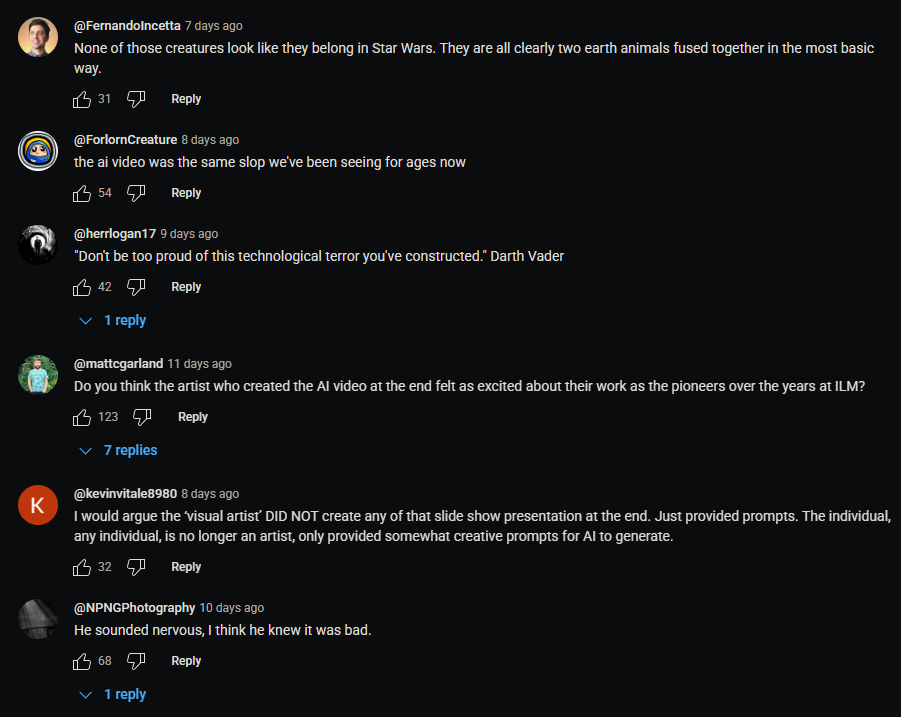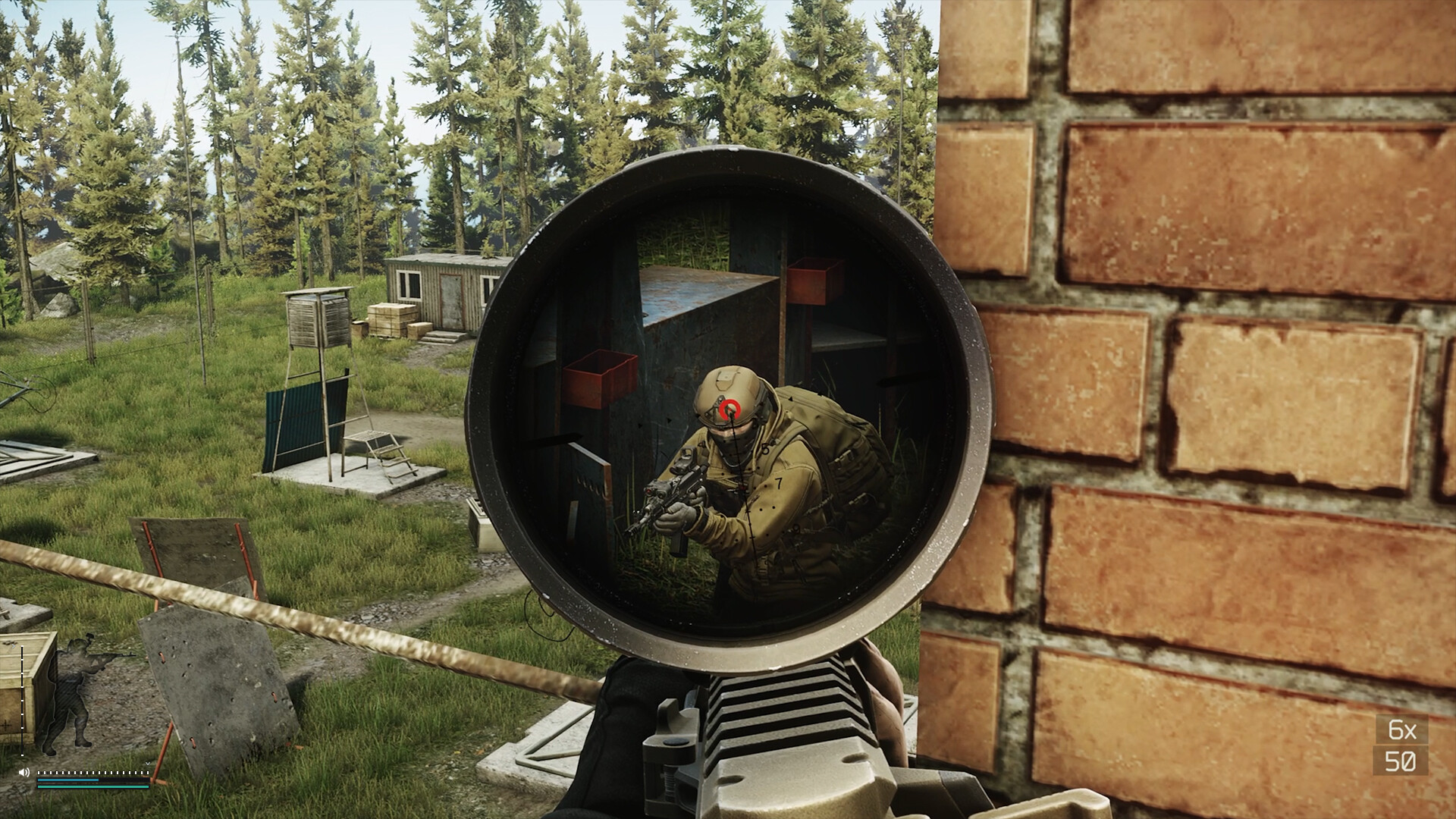Lucasfilm declares creative bankruptcy with an AI-generated Star Wars film that's just 2 minutes of mostly normal animals jumbled together
I've got a bad feeling about this.
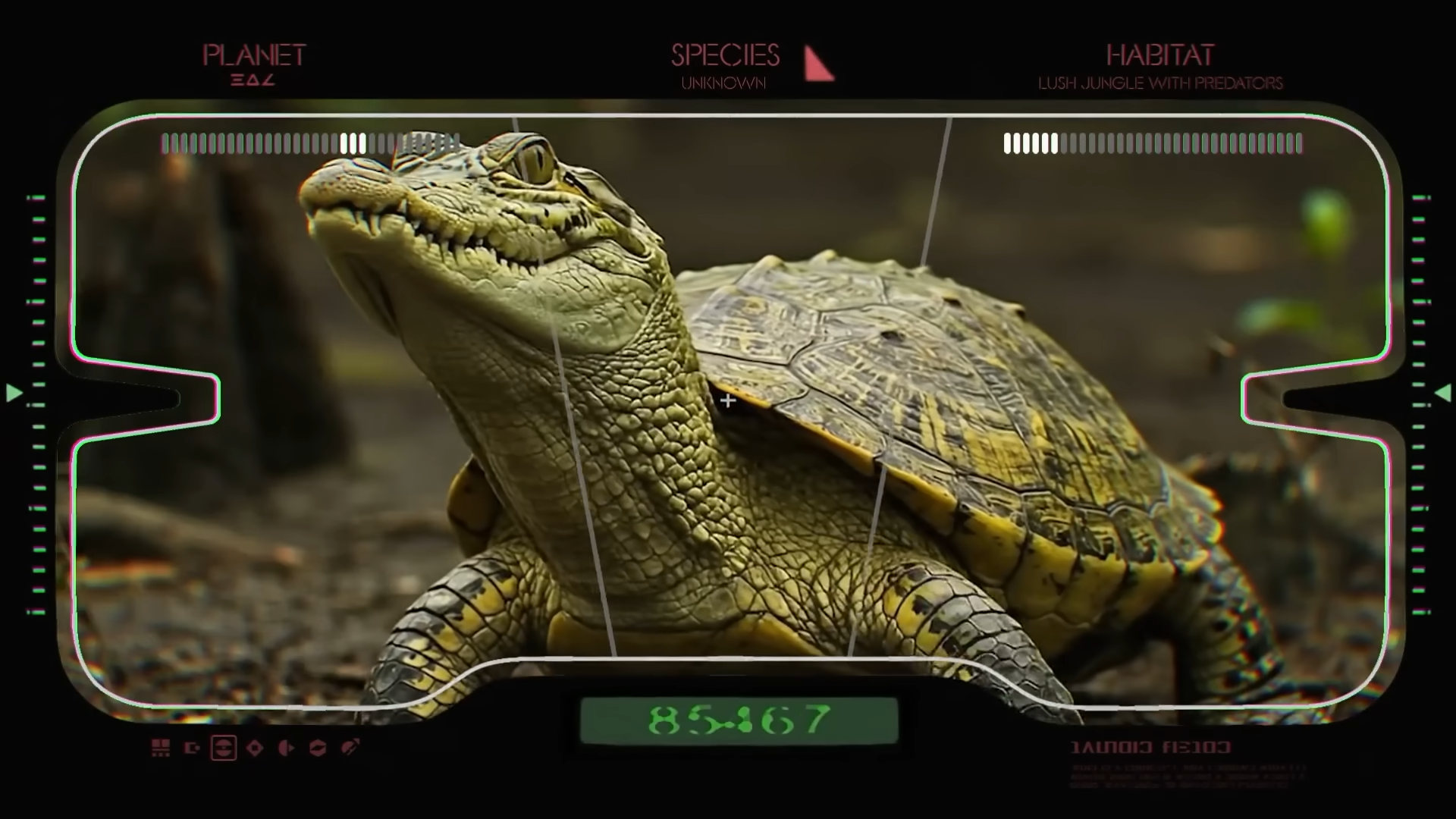
The history of Star Wars is the history of visual effects. For decades, Lucasfilm and its effects division Industrial Light & Magic have—through innovations in camera technology, miniature techniques, practical effects, and computer-generated imagery—charted the course of Hollywood film production, establishing a visual canon that resonates so strongly with its fans that many of them idolize a guy who hacked up a bunch of younglings with a laser sword purely because of how cool his armor looks.
To celebrate that legacy of cutting-edge craftsmanship, former ILM chief creative officer and current senior vice president of creative innovation at Lucasfilm Rob Bredow got on a TED stage in April to share a vision of what he called "a new era of technology" (via 404 Media). That vision was a two-minute AI-generated video of blue lions and chimpanzees with zebra stripes, not to mention the ungodly outcome of snail and peacock interbreeding.
Bredow began his talk with a summary of ILM's history, founded 50 years ago to "solve the visual storytelling challenges" in Star Wars. As Bredow describes it, ILM's success came from artists and engineers working in tandem, blending aesthetic sensibility with technical innovation. He shared anecdotes from the production histories of Jurassic Park, Indiana Jones, and the Mandalorian—moments where artists elevated what could be achieved with new technology, rather than be replaced by it.
I can safely say that if I sent a probe down to a Star Wars planet and got back images of alligator heads crudely spliced onto turtle bodies, I'd be pretty bummed.
"That's blending the old and new—how tech and creativity working hand in hand create things we just love," Bredow said. "So what happens when you put the latest AI tools in the hands of talented artists, both to see how good these tools are these days, and what does it do to our artists' imagination?"
Unfortunately, I don't think tech and creativity were particularly aligned on this one.
Bredow then moved on to his premiere of Star Wars: Field Guide, a short film created by an ILM artist over the course of two weeks using AI generation to "explore what it would feel like if you sent a probe droid out to a brand new Star Wars planet." And I can safely say that if I sent a probe down to a Star Wars planet and got back images of alligator heads crudely spliced onto turtle bodies, I'd be pretty bummed.
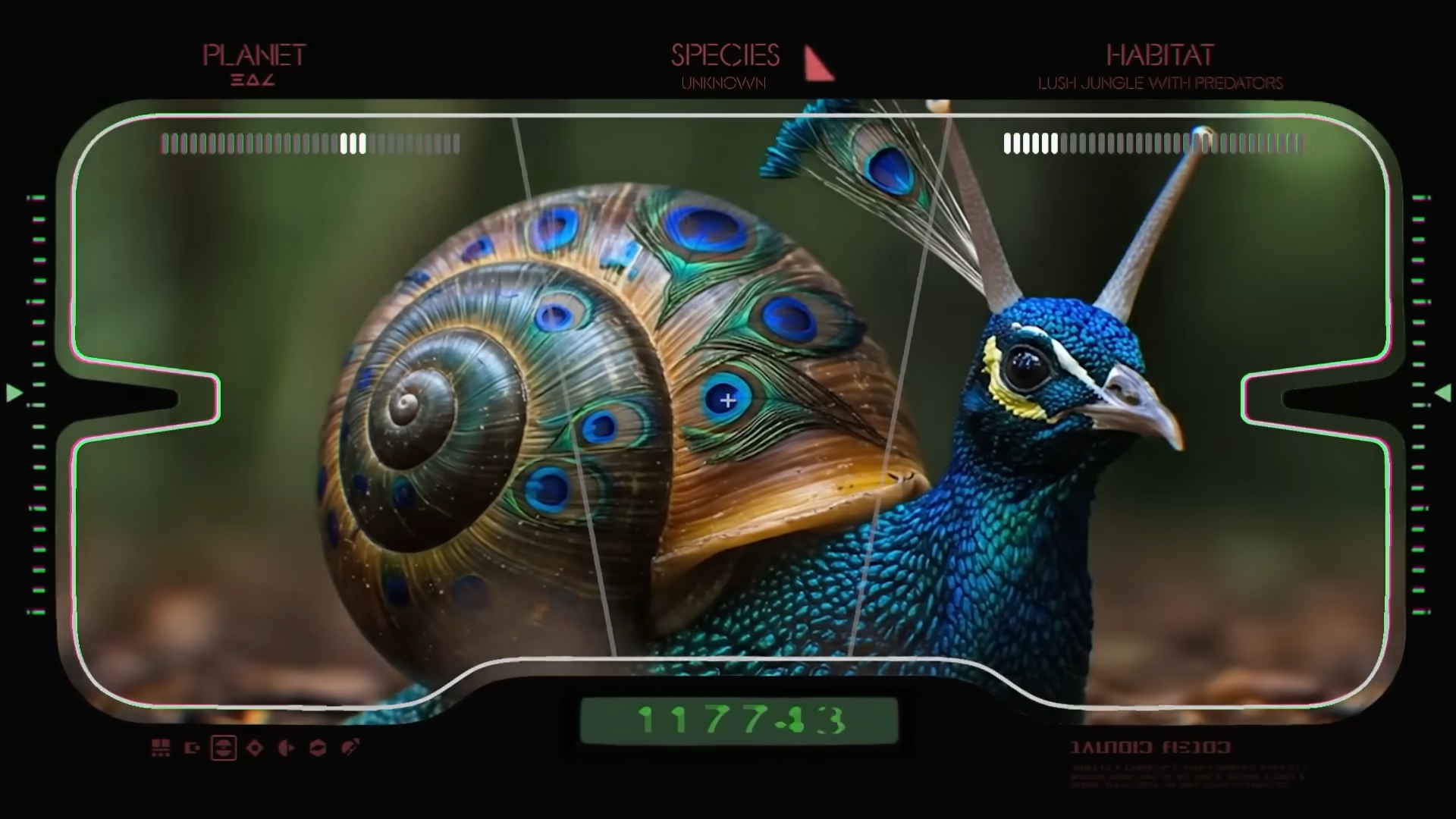
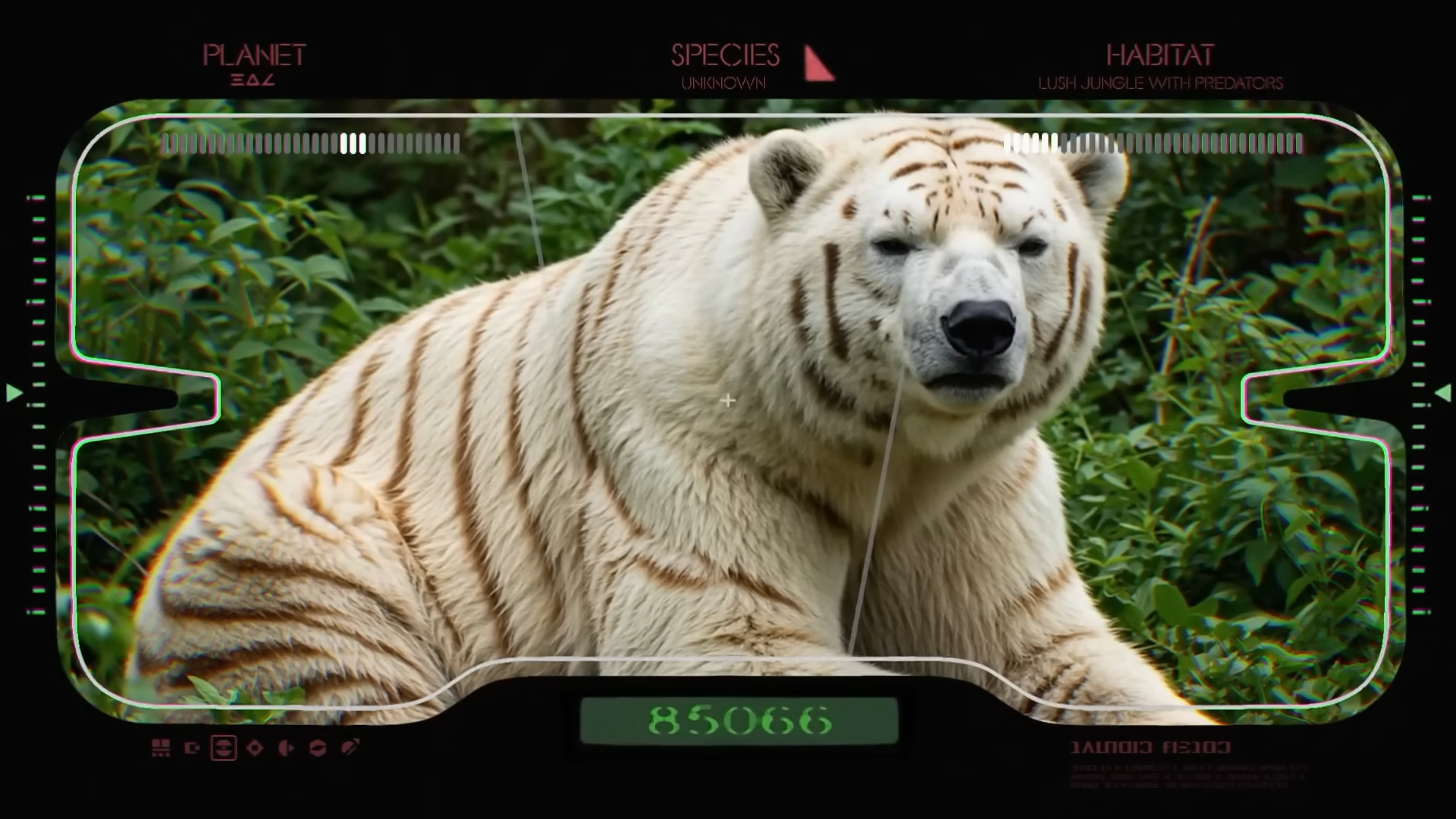

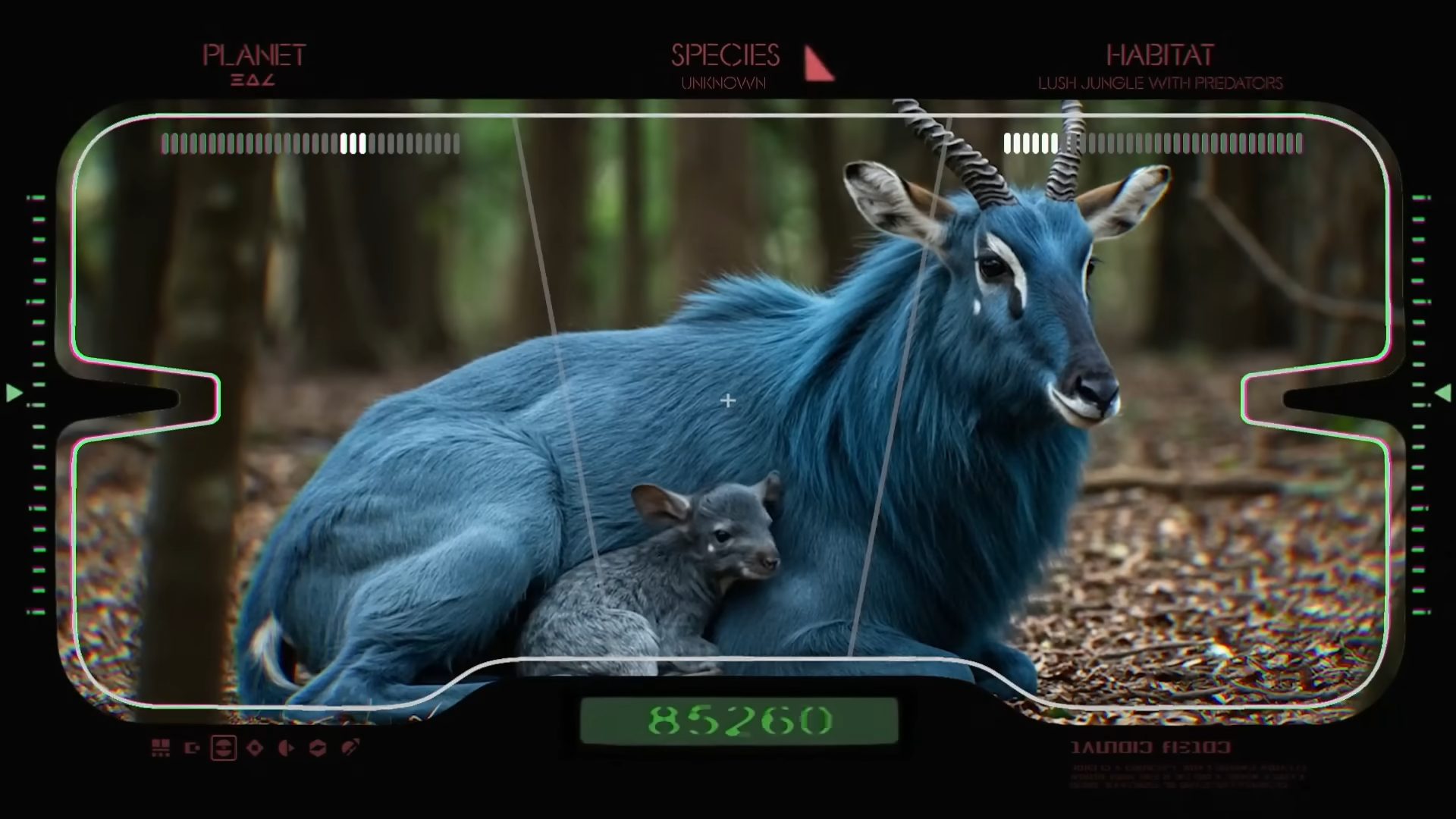
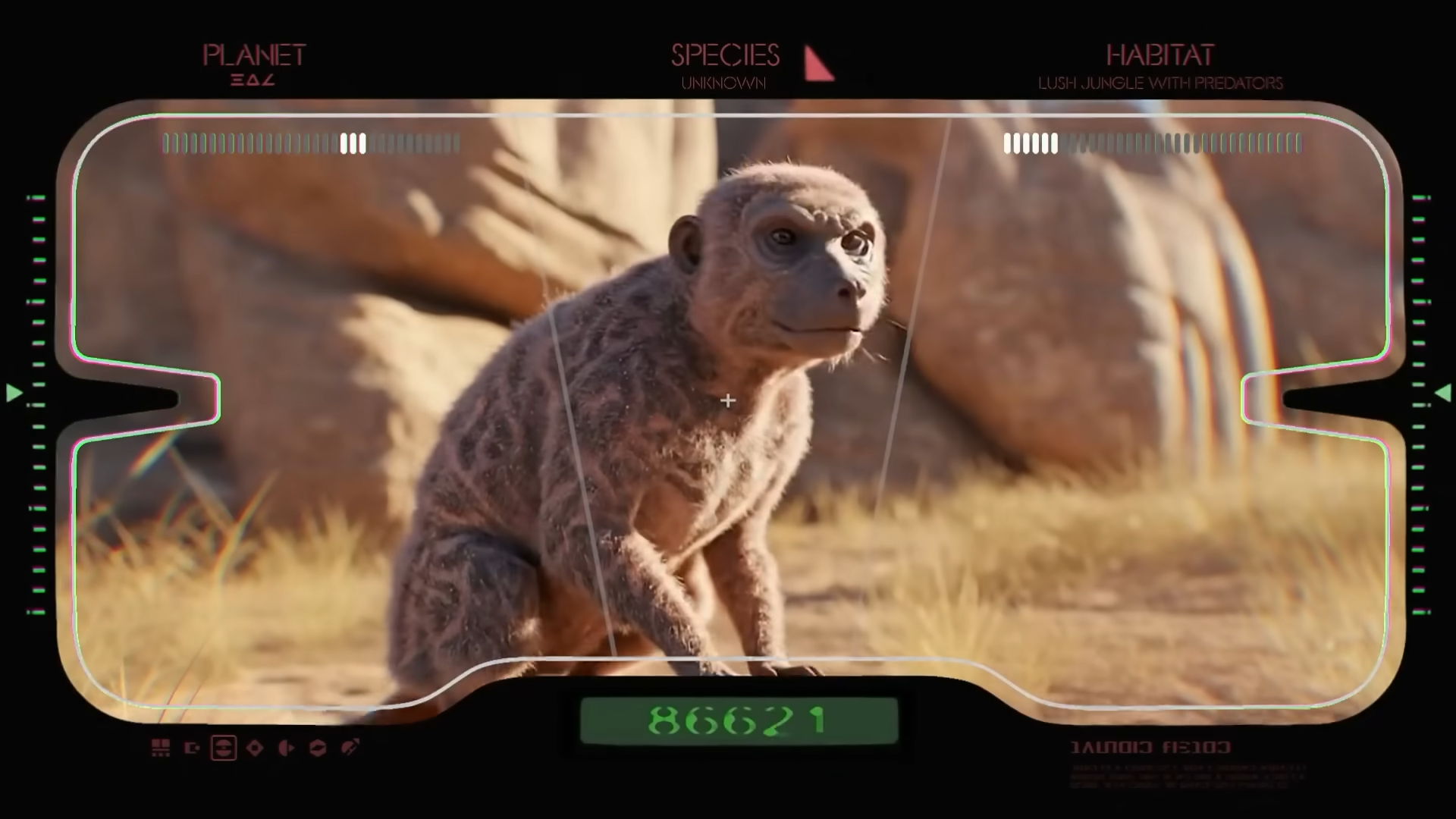
Field Guide is, to be frank, embarrassing. Despite the triumphant Star Wars score, ILM's foray into AI generation didn't produce anything remotely compelling—or even particularly alien. It made a mostly normal sloth with bits of rock sticking out of its fur. It put a peacock head on a snail. There's a bear with tiger stripes. There's a blue gazelle, and also a blue lion, and a pink iguana, and a couple walruses with octopus bits stuck on there, and none of it makes me feel anything because why would I care about a barely-fake creature—essentially just two existing animals smushed together—which nobody bothered to make themselves?
Keep up to date with the most important stories and the best deals, as picked by the PC Gamer team.
"It's pretty fun to see artist expression leveraging the latest new tools," Bredow said as the film ended to perhaps the most generous applause anyone has ever given, and I have to ask: Is it? The AI-generated imagery doesn't have any glaring errors, but what was fun here? What's being expressed by a person typing "what if a hyena had an ape's face" for two weeks?
Bredow closed out his talk as though he had illustrated a point—that his two minutes of animated creature collage is a stepping stone towards, as he said, "that next Star Destroyer moment that's going to light up screens around the world."
I'm still waiting to be convinced.
Lincoln has been writing about games for 11 years—unless you include the essays about procedural storytelling in Dwarf Fortress he convinced his college professors to accept. Leveraging the brainworms from a youth spent in World of Warcraft to write for sites like Waypoint, Polygon, and Fanbyte, Lincoln spent three years freelancing for PC Gamer before joining on as a full-time News Writer in 2024, bringing an expertise in Caves of Qud bird diplomacy, getting sons killed in Crusader Kings, and hitting dinosaurs with hammers in Monster Hunter.
You must confirm your public display name before commenting
Please logout and then login again, you will then be prompted to enter your display name.

